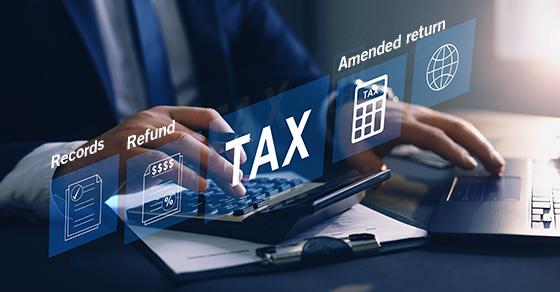Most people are genuinely appreciative of inheritances, and who wouldn’t enjoy some unexpected money? But in some cases, it may turn out to be too good to be true. While most inherited property is tax-free to the recipient, this isn’t always the case with property that’s considered income in respect of a decedent (IRD). If you have large balances in an IRA or other retirement account — or inherit such assets — IRD may be a significant estate planning issue.
How it works
IRD is income that the deceased was entitled to, but hadn’t yet received, at the time of his or her death. It’s included in the deceased’s estate for estate tax purposes, but not reported on his or her final income tax return, which includes only income received before death.
To ensure that this income doesn’t escape taxation, the tax code provides for it to be taxed when it’s distributed to the deceased’s beneficiaries. Also, IRD retains the character it would have had in the deceased’s hands. For example, if the income would have been a long-term capital gain to the deceased, such as uncollected payments on an installment note, it’s taxed as such to the beneficiary.
IRD can come from various sources, including unpaid salary, fees, commissions or bonuses, and distributions from traditional IRAs and employer-provided retirement plans. In addition, IRD results from deferred compensation benefits and accrued but unpaid interest, dividends and rent.
The lethal combination of estate and income taxes (and, in some cases, generation-skipping transfer tax) can quickly shrink an inheritance down to a fraction of its original value.
What recipients can do
Although IRD must be included in the income of the recipient, a deduction may come along with it. The deduction is allowed (as an itemized deduction) to lessen the “double tax” impact that’s caused by having the IRD items subject to the decedent’s estate tax as well as the recipient’s income tax.
To calculate the IRD deduction, the decedent’s executor may have to be contacted for information. The deduction is determined as follows:
- First, you must take the “net value” of all IRD items included in the decedent’s estate. The net value is the total value of the IRD items in the estate, reduced by any deductions in respect of the decedent. These are items which are the converse of IRD: items the decedent would have deducted on the final income tax return, but for death’s intervening.
- Next you determine how much of the federal estate tax was due to this net IRD by calculating what the estate tax bill would have been without it. Your deduction is then the percentage of the tax that your portion of the IRD items represents.
Calculating the deduction can be complex, especially when there are multiple IRD assets and beneficiaries.
Be prepared
As you can see, IRD assets can result in an unpleasant tax surprise. Because these assets are treated differently from other assets for estate planning purposes, contact us. Together we can identify IRD assets and determine their tax implications.
© 2024






